When we drive our cars, they collect signs of that use – patina, in collector-car speak. The latest issue of Hagerty Drivers Club magazine, in which this article first appeared, explored the delight found in such imperfect cars. – ED
If you watch too many automotive TV shows and read too many articles on collecting, the mantra that gets beaten into your brain is to buy the best car in the best possible condition, as that’s what’s likely to appreciate the most. Another way this sometimes gets phrased is: “You can’t spend too much – you can only buy too soon.”

That’s all well and fine if you have the disposable income to spring for the best of the best. However, many of us don’t.
One way out of this trap of a surplus of passion and a deficit of funds is to buy a car that doesn’t even attempt to be a shiny lust object and instead is one that proudly wears its age and experience out in the open.
I’m talking about patina.
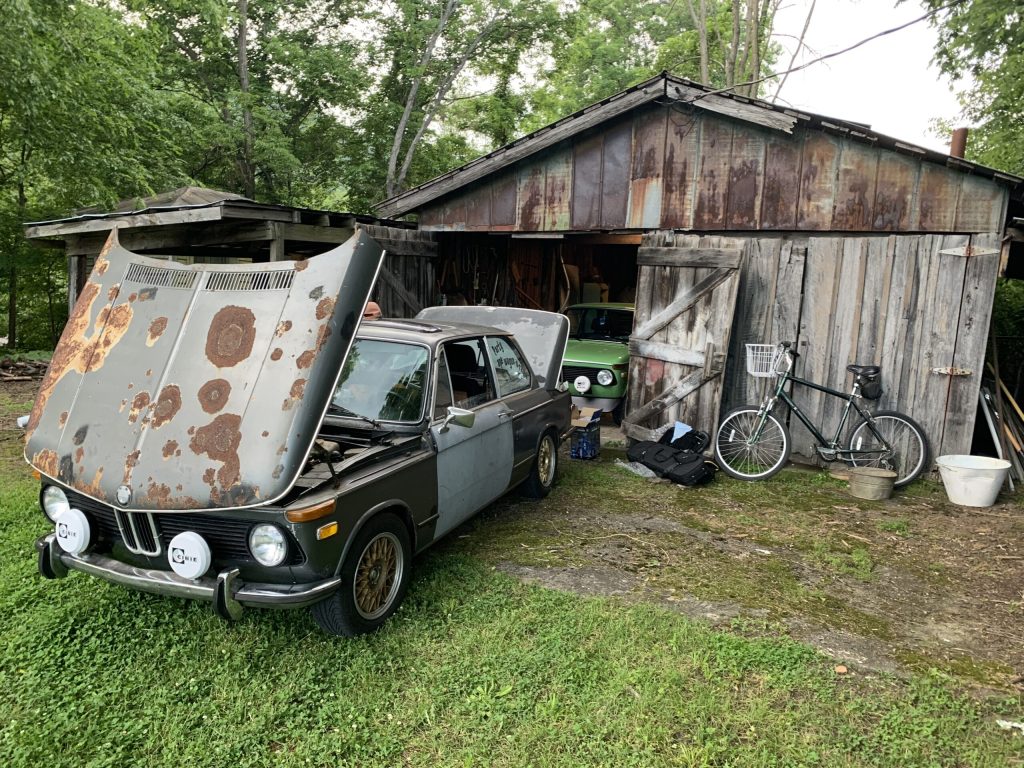
If you’ve made it this far, you’re probably aware that patina can be desirable. Battered-looking goods have their own appeal, even apart from the monetary value that untouched originality occasionally brings. That’s why home furnishing stores are full of new cabinets that have that distressed French farmhouse look and why Fender sells a “Time Machine” line – new electric guitars pre-distressed at the factory to simulate decades of stage wear. This “relic-ing” has spread into the car world as well. Some of it may have been kick-started by the rat-rod movement that began in the hot-rod world 30 years ago, where a backlash against the cost of shiny customs resulted in home-built cars with oxidized body panels, no chrome, and steel wheels. Ironically, the term “rat rod” has now morphed into a moniker for any car with an outrageously distressed finish, even if it’s sitting atop expensive oversize alloys.
Yet one of the biggest selling points of patina – the “real” kind, at least – comes down to pounds and sense: Worn cars are usually significantly less expensive than those in excellent condition and a bargain compared with those where every inch of the car has been brought up to like-new standards. This makes it possible for someone of modest means to buy their dream.
I’ll caution, though, that if you go this route, you need to be absolutely honest with yourself and aware of the fact that if you’ll never be happy unless you own a car in condition A, you should buy a car in condition A and not buy one in condition C and try to put it into condition A. Aside from the financial havoc that will likely cause, there’s a very real risk of mucking up the car.
Here’s the deal: A car’s appearance is a synergistic thing where the condition of the paint, the brightwork, and the interior all hang together and project a certain image. If you have a well-patinaed car that you want to “restore” (and I use that word in quotes because it means so many different things), you slide down an expensive slippery slope, because you need to address all of the items that project that image. If you just paint the car, all the old chrome looks like hell. Replace the bumpers and trim with new, and all the rubber and glass look old. Complete the exterior refurbishment, and the interior shows its age.
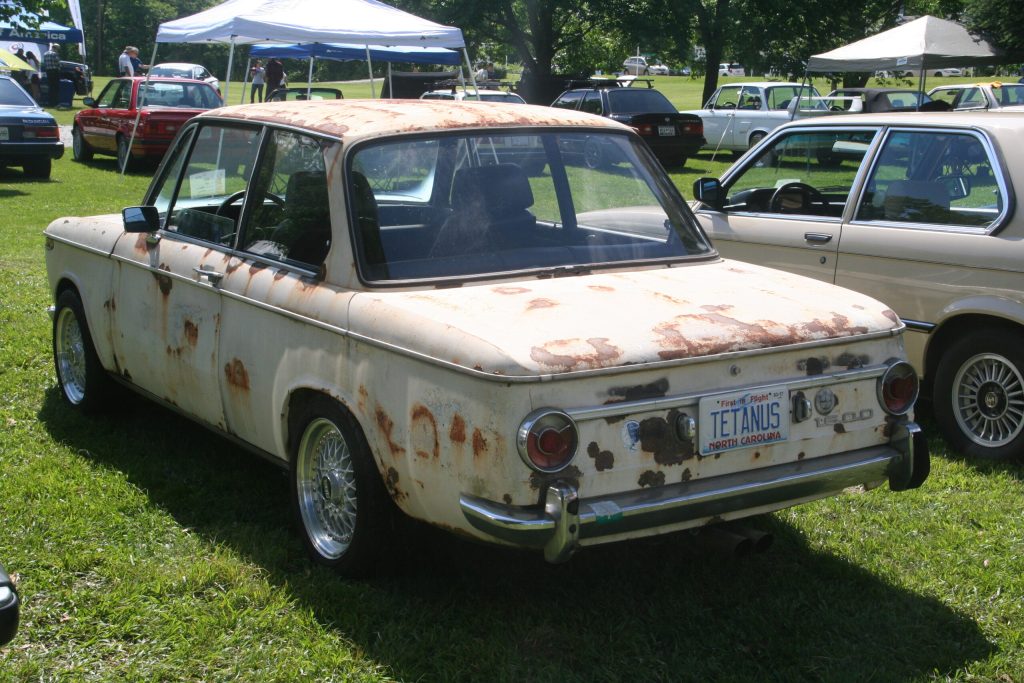
It’s much easier – and less expensive – to live with a car where both exterior and interior already have a certain amount of wear on them. Since the car is nowhere near perfect, you’re not constantly chasing perfection because you’re not under the illusion that you’re going to reach it. And, since you’re less worried about dings from driving and parking, you’re more likely to use the car.
For these reasons, I’m a big believer in cars with patina. My 1973 BMW 3.0CSi is the only car I’ve ever had an outer-body restoration done on. All my other vintage cars have some degree of patina. My ’73 2002 and my Bavaria are lightly dinged survivors wearing original paint. The previous owner of my ’72 2002tii sanded off the rust spots and touched them up with doesn’t-quite-match, rattle-can Rust-Oleum. My ’75 2002 – known as “Bertha” – has rust spots the size of dinner plates on it. My ’74 Lotus Europa Twin Cam Special was kept under a tarp in a storage container for over 30 years, which carved some interesting patterns into the dried-out, fragile paint.
Personally, I love the look of surface rust blooms against light-colored paint. It looks so organic – like flaming but done by nature. Of course, there’s a line between patina and just plain beat up, but most of us know that line when we see it. When it’s at its best, patina has the natural sensibility of Monet’s Water Lilies or the inherent rhythm of a Jackson Pollock abstract.
One misnomer about patina is that, since the car is already imperfect, you can drive it in any kind of weather. Any vintage car is inherently rust-prone, and a car that already has exposed patches of surface rust is even more so, so storing it outside, driving it in the rain, or out in the snow and salt is likely to cause the rust to explode.
But this does raise the reasonable question of how to protect the surface rust that’s already there and prevent it from spreading or deepening. There are four basic approaches. Be aware that only the last won’t alter the patina’s original, baked-in-the-sun look.
The first is to sand down any scaly rust that will fester, then spray clear coat. Make no mistake – this is painting, and as such, the quality is proportional to the amount of preparation. If the surface isn’t clean, the clear coat won’t adhere well and will eventually start to peel (hey, maybe you want peeling clear coat as part of the patina). And presumably you’re clear-coating the entire car, not only the surface-rusty area you want to preserve. If there’s flaking paint in addition to the rust, you can’t just clear-coat over it and trap it like a fly in amber; you’re going to need to sand it. Personally, I’m not a big fan of clear-coating patina, as it seems to me that if you’re going to prep a car and then shoot a hard coat of anything, you might as well go all in and paint it. Plus, “shiny patina” seems like an oxymoron.
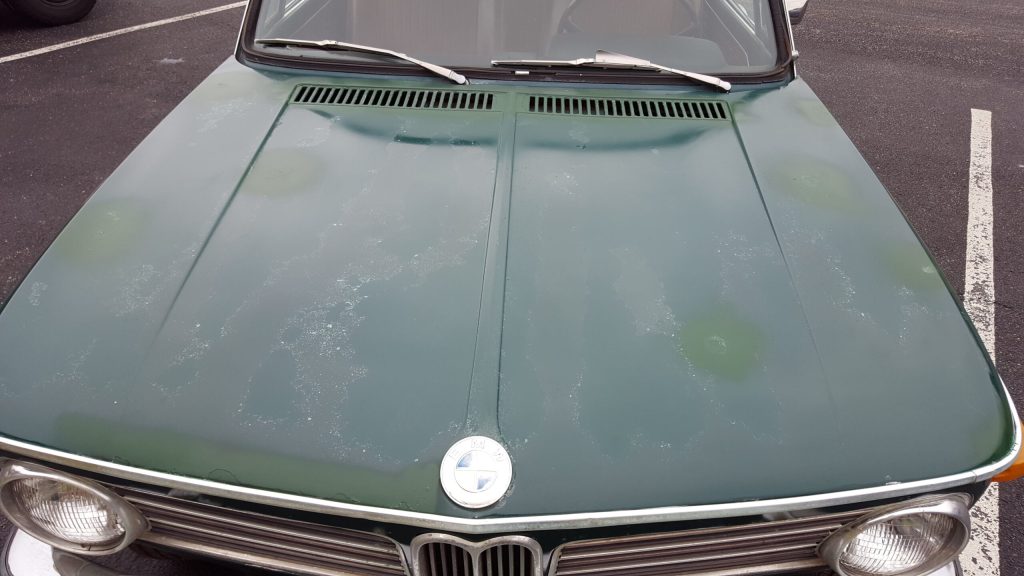
The second and widely popular approach is to wipe on an oil-based product such as boiled linseed oil (mainly a wood preservation product) cut with mineral spirits, or Penetrol (an additive for oil-based paints to help lessen brush and roller marks). Both work as rust inhibitors by providing a layer of oily protection and helping the surface to shed water. After treatment, the surface looks wetter, shinier, and darker, which can make both the paint and the rust colors pop more, though all these effects will fade within months, depending on the level of exposure.
Be aware, though, that this approach has downsides. The creeping nature of oil is good for getting into rust pores and inhibiting corrosion, but if in the future you want to have the car painted, it can be difficult to get the surface oil-free. Linseed oil and Penetrol will eventually harden, but until they do, they can be gooey, so don’t wipe them on when the pollen count is high. Even after hardening, they can get tacky on a hot day.
The third approach is to do what you’d do on a car whose paint was simply faded – compound it and wax it. The idea is that the compounding will bring out the shine on the remaining paint, and the wax offers rusted areas some of the same moisture protection and water-shedding as the oil-based products while not penetrating as deeply into the metal and thus not being potentially troublesome if you later wish to paint the car.
After reading the above approaches, you can appreciate that, when you see a heavily patinaed car that is shiny and whose colors pop like an exotic bird’s plumage, that’s not how it rolled out of the junkyard – work has been done on it to give it that look.
The fourth method is the one I prefer: Don’t touch it. I’d no sooner change the worn look of any of my cars than get plastic surgery on my own scarred and craggy face.
Find an imperfect car and then resist the urge to “fix” it. You’ll smile like an idiot when you drive it on a Sunday instead of bemoaning the fact that you always wanted one but couldn’t afford it.
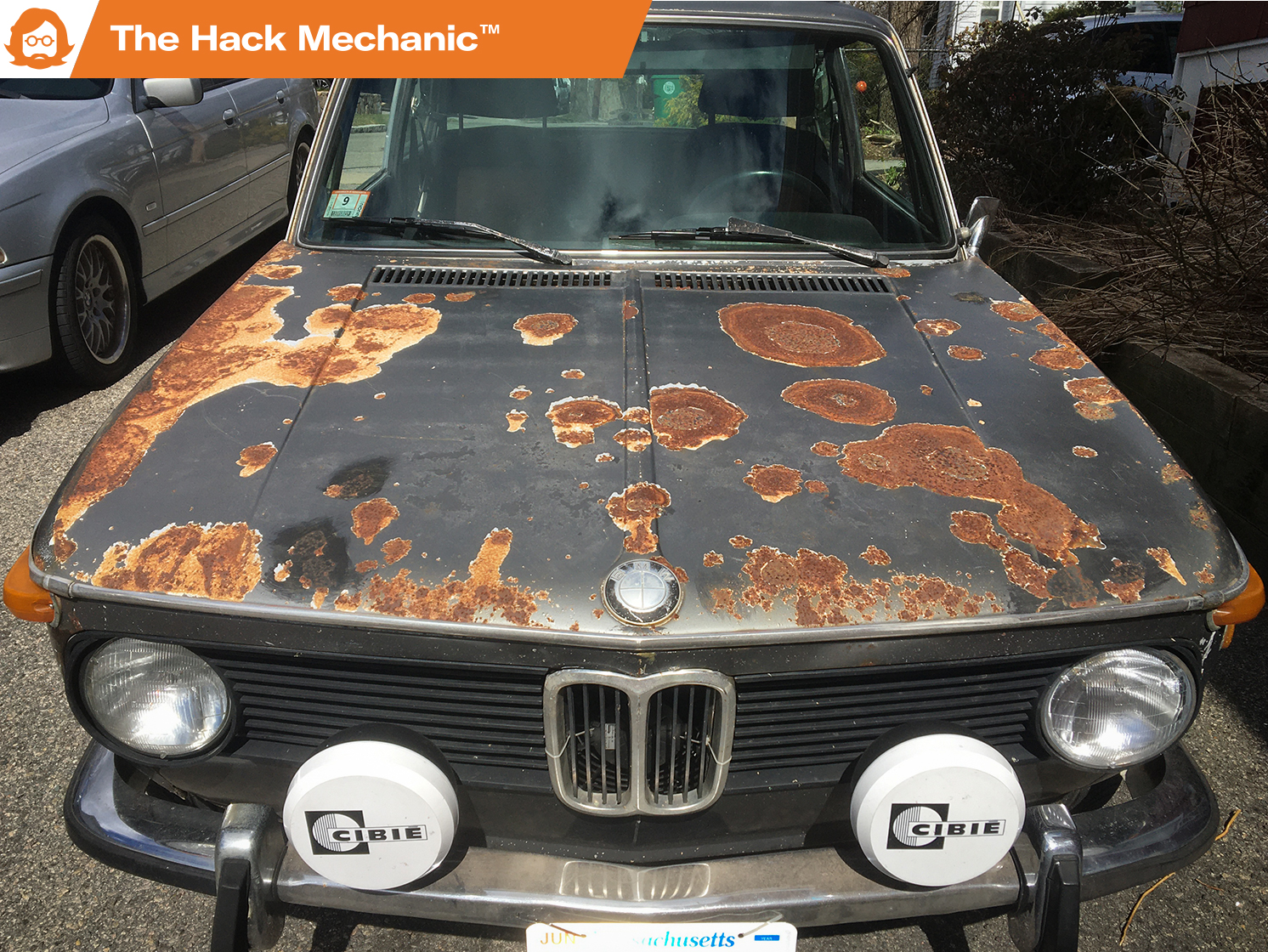

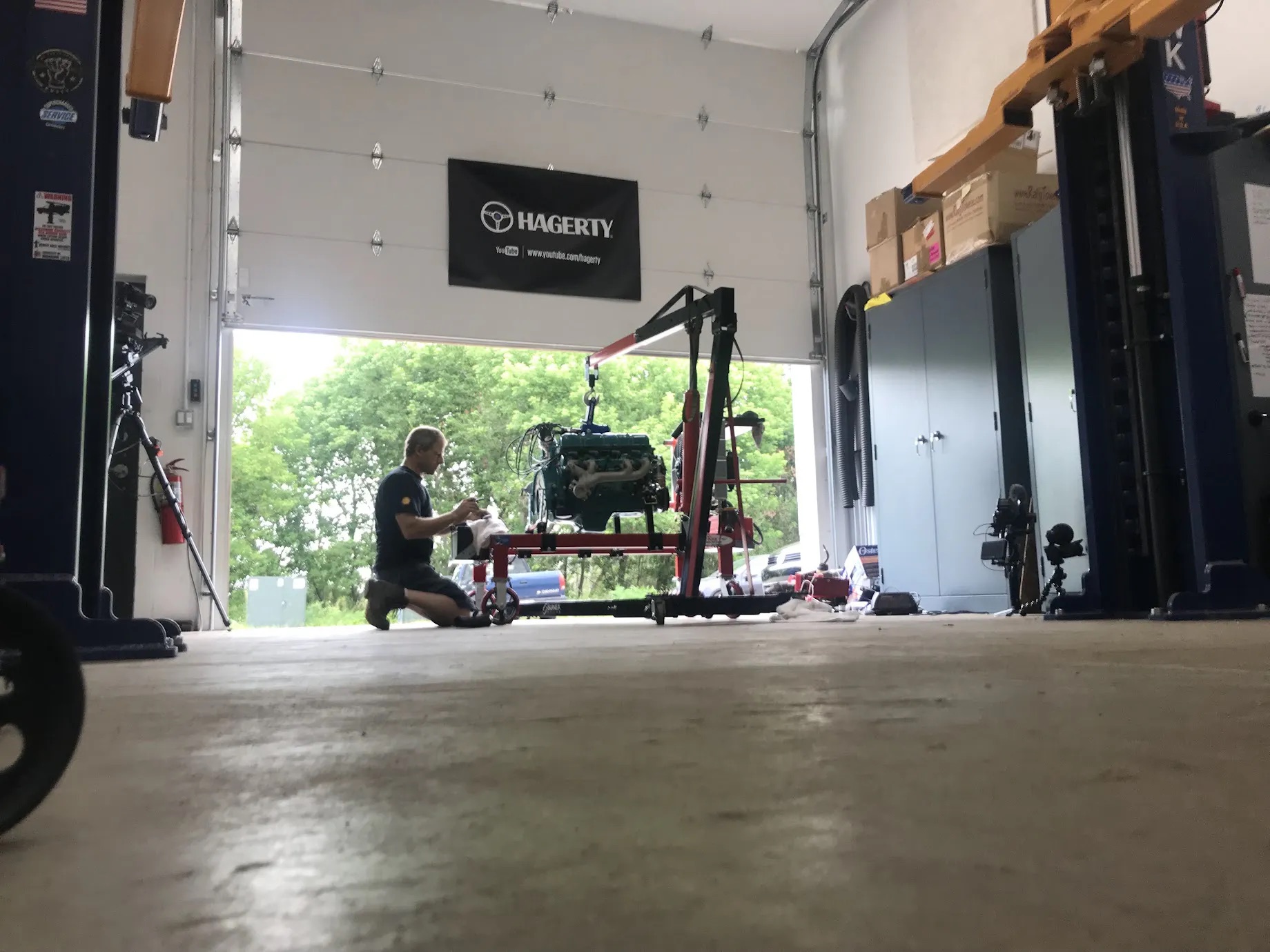







Well written article,normally we get insanely scribbled tosh but not this time ,good work Mr.Hagerty
We do it for the comments.
I agree about the article about Patina paintwork, my 1964 Singer Vogue is still 95% original paintwork, over the yrs it has been waxed and has that lovely old car look about it, there has not been any welding or filler as every nook and cranny was waxed ( you know the make ) and where double skins met such as wheel arch lips, inside doors , etc were kept oiled. and is now at 120k miles. My 1996 Golf on the other hand has 50% of the clear coat missing but as it is only day to day transport I don’t mind.